It is difficult to overstate the magnitude of Jackson’s popularity in early nineteenth-century art and song, particularly in the southern and western states and territories. Depictions of Jackson’s victory at New Orleans, and of Jackson himself, formed a significant part of a post–War of 1812 surge in American patriotic imagery. Frontier militiamen and their general became paragons of American masculinity and self-reliance.
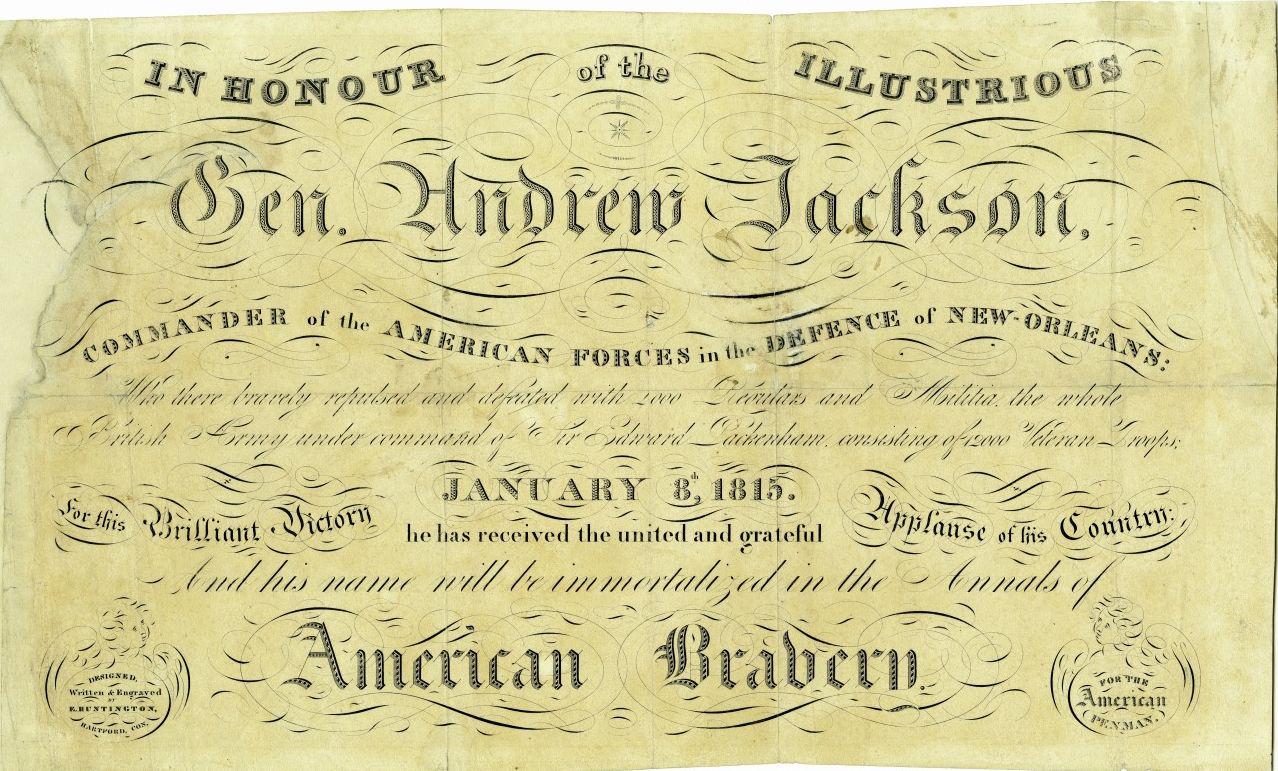
Certificate "in honor of the illustrious Gen. Andrew Jackson" for the American Penman
1824; engraving
by Eleazar Huntington, engraver
The Historic New Orleans Collection, MSS 200, 50-20-L
Eleazar Huntington (1789–1852) was an engraver, author, and professor of penmanship. His artfully engraved certificate predicts General Jackson's immortality "in the Annals of American Bravery," though he misstates the numbers of soldiers involved. In truth, about 5,200 American troops faced approximately 9,600 British troops on January 8, 1815.

Descriptive View of the Glorious Battle of New Orleans
probably between 1815 and 1820; engraving on linen
The Historic New Orleans Collection, 2016.0215.1
This Scottish-made textile print situates the Battle of New Orleans within a progression of American independence and military prowess dating from before the Revolutionary War. A mounted General Jackson is shown rallying his troops and reciting a poem/song that is based on Robert Burns's 1793 "Scots Wha Hae" though the words have been adapted for the American cause in 1812–1815.

Champlain, Plattsburgh, & Orleans: Honor to the brave!! Splendid battles!
1826; letterpress broadside with woodcut
by Micah Hawkins, author; Samuel Woodworth, author
The Historic New Orleans Collection, 2007.0118

The Hunters of Kentucky, or the Battle of New Orleans
between 1834 and 1839; letterpress broadside with woodcut
by Samuel Woodworth, author, and J. Pitts, printer
The Historic New Orleans Collection, 87-132-RL
Popular songs celebrated Jackson's victory at New Orleans—Samuel Woodworth's "Hunters of Kentucky" was a particular favorite—and in the 1820s and 1830s became associated with his political campaigns.
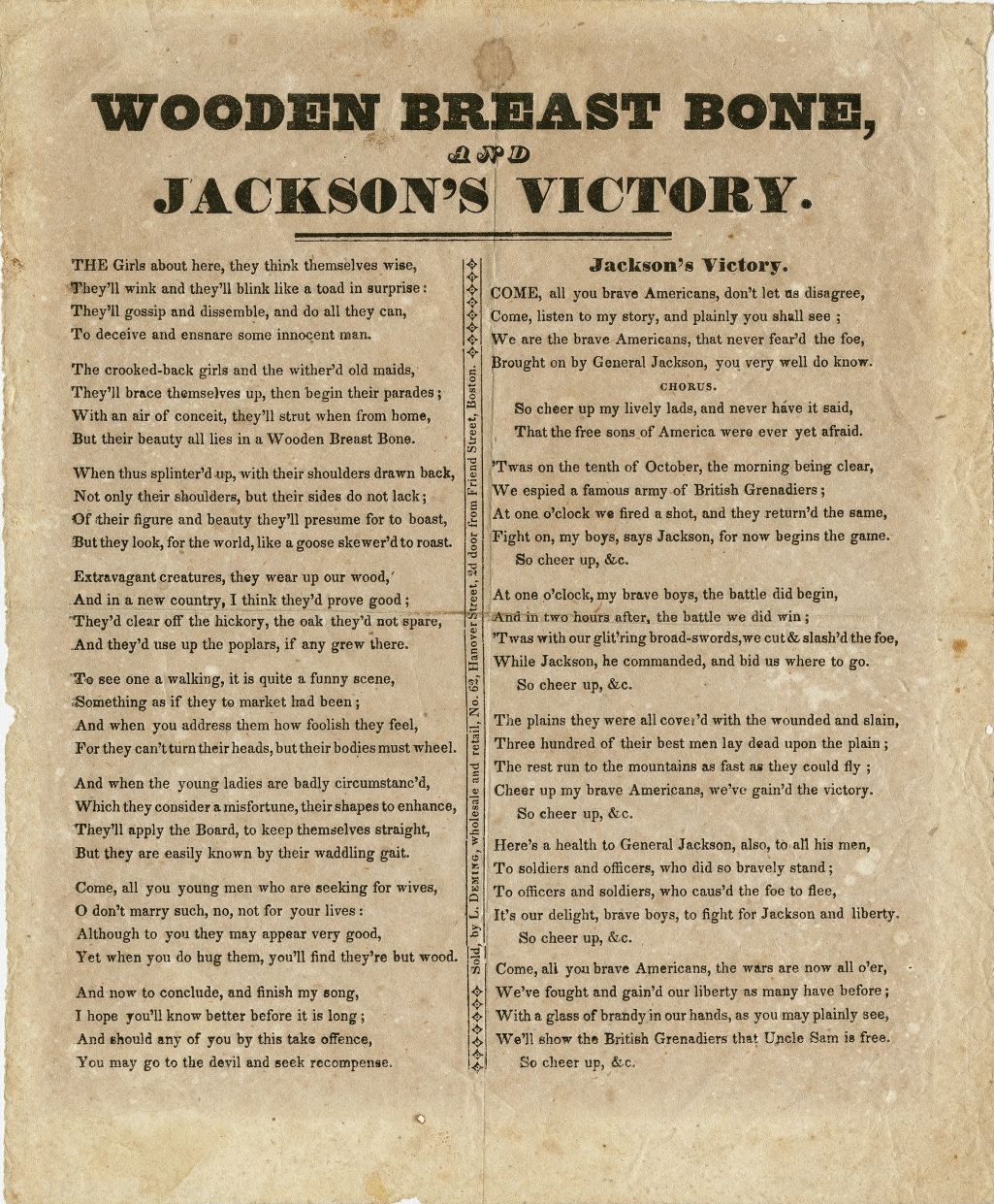
Wooden Breast Bone, and Jackson’s Victory
between 1832 and 1837; letterpress handbill
by Leonard Deming, publisher
The William C. Cook War of 1812 in the South Collection at The Historic New Orleans Collection, MSS 557, 2001-68-L.43
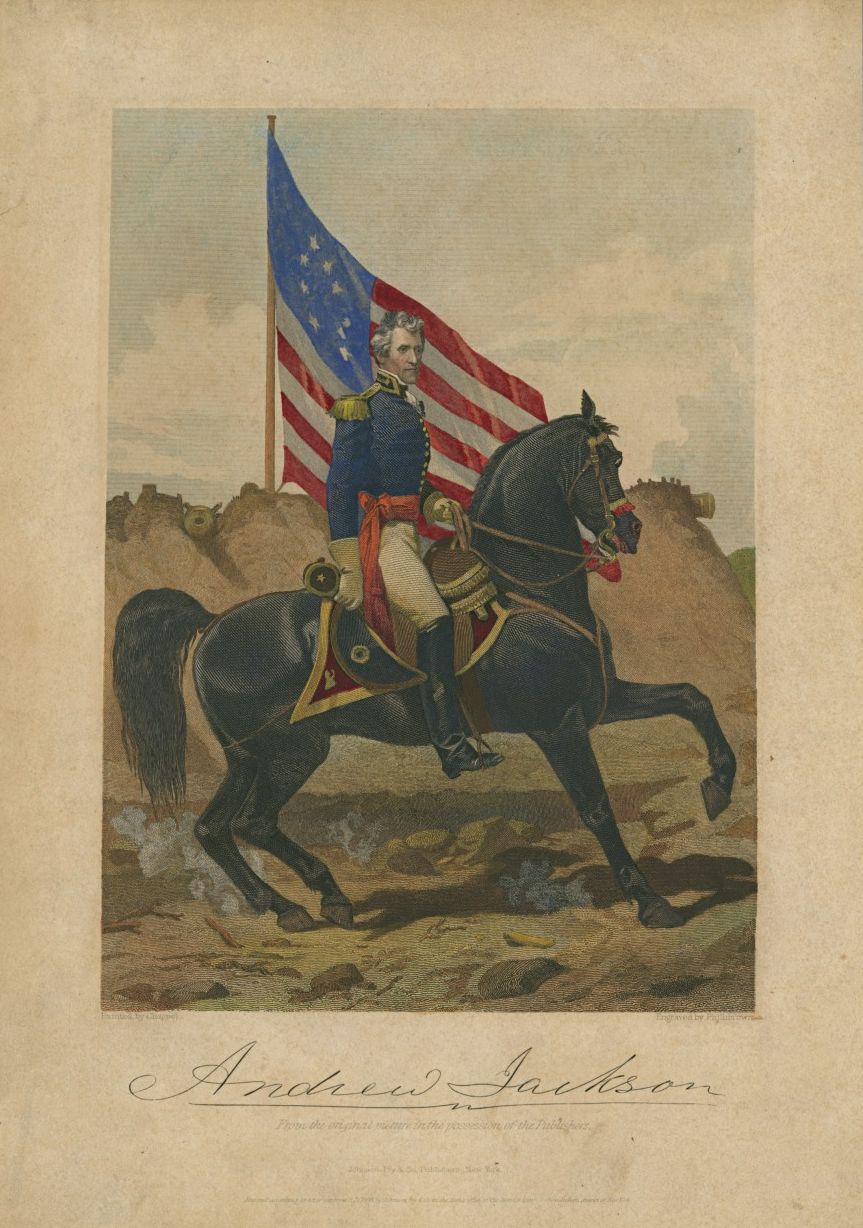
Andrew Jackson
ca. 1858; hand-colored engraving
by Alonzo Chappel, artist; Thomas Phillibrown, engraver; Johnson, Fry and Co., publisher
The Historic New Orleans Collection, gift of Boyd Cruise and Harold Schilke, 1959.160.15
Jackson's victory at New Orleans restored public confidence in American military prowess. Long after the battle, artists and publishers continued to produce patriotic images of Jackson as a national hero.
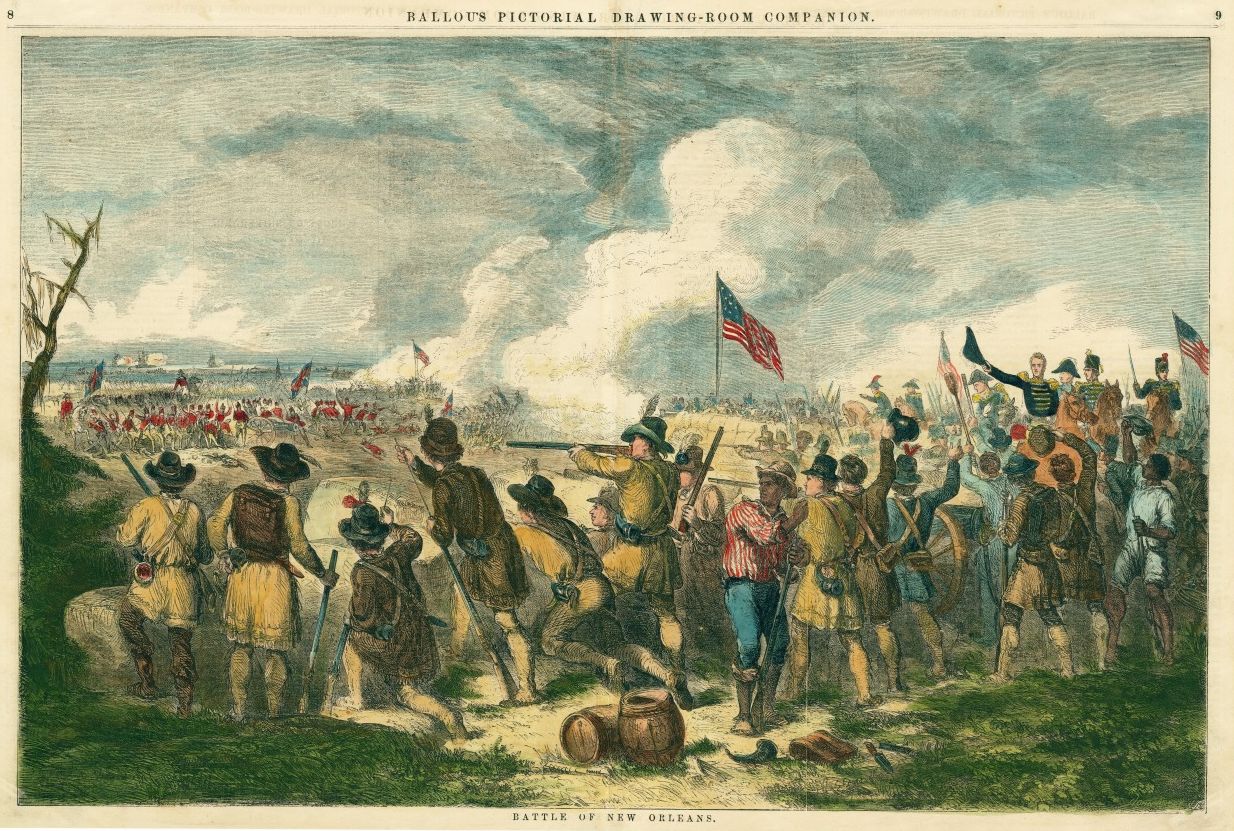
Battle of New Orleans
1856; hand colored wood engraving
by John Andrew, engraver, and M. M. Ballou, publisher
The Historic New Orleans Collection, The L. Kemper and Leila Moore Williams Founders Collection, 1958.98.6
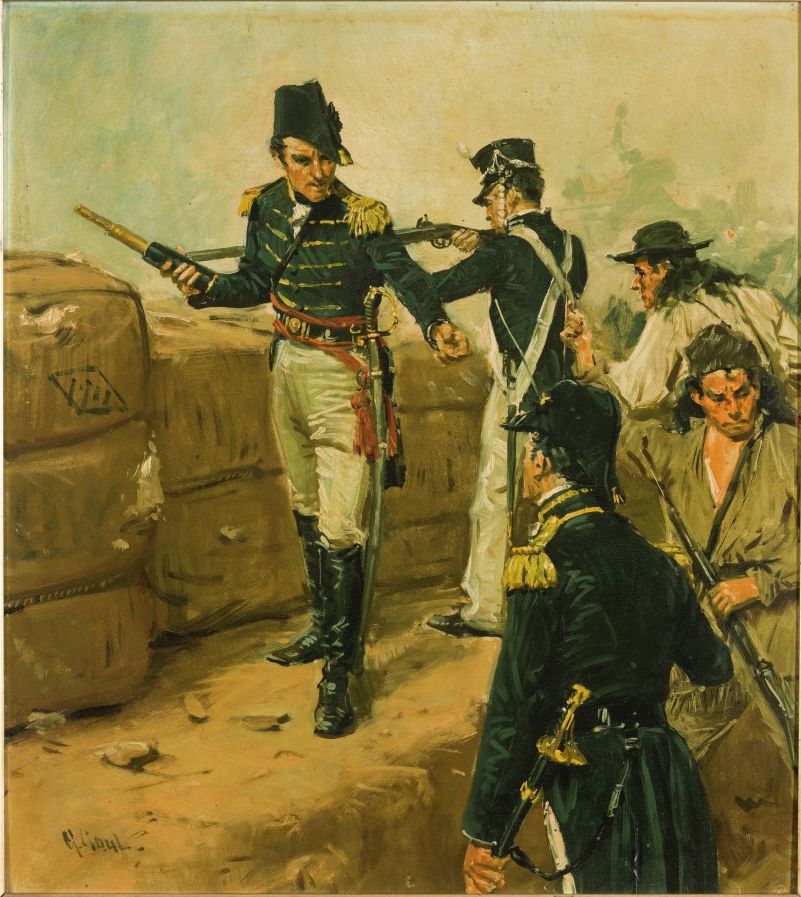
Battle of New Orleans
probably late 19th century; oil painting on board
by Gilbert William Gaul, artist
The Historic New Orleans Collection, 2016.0397
